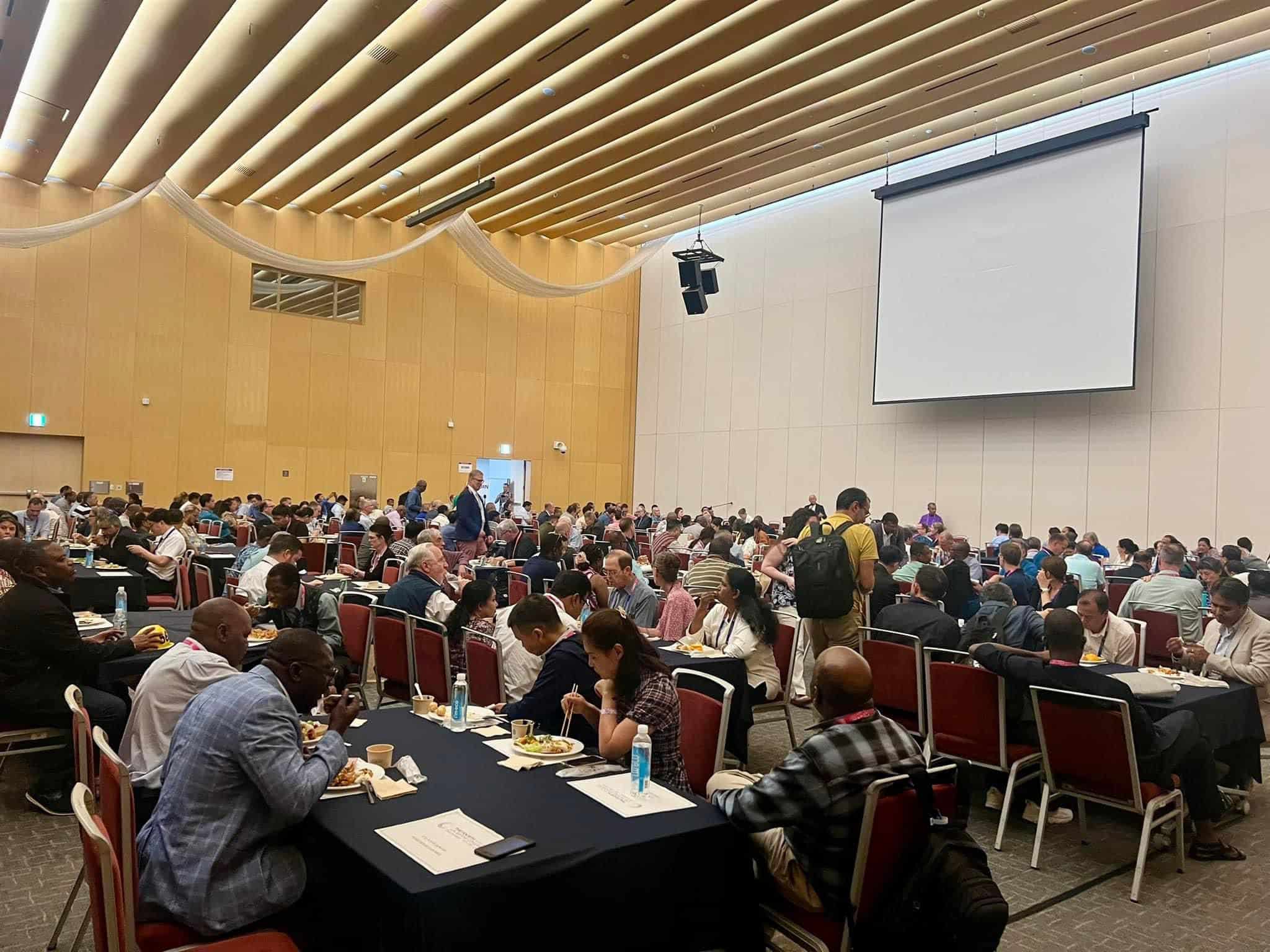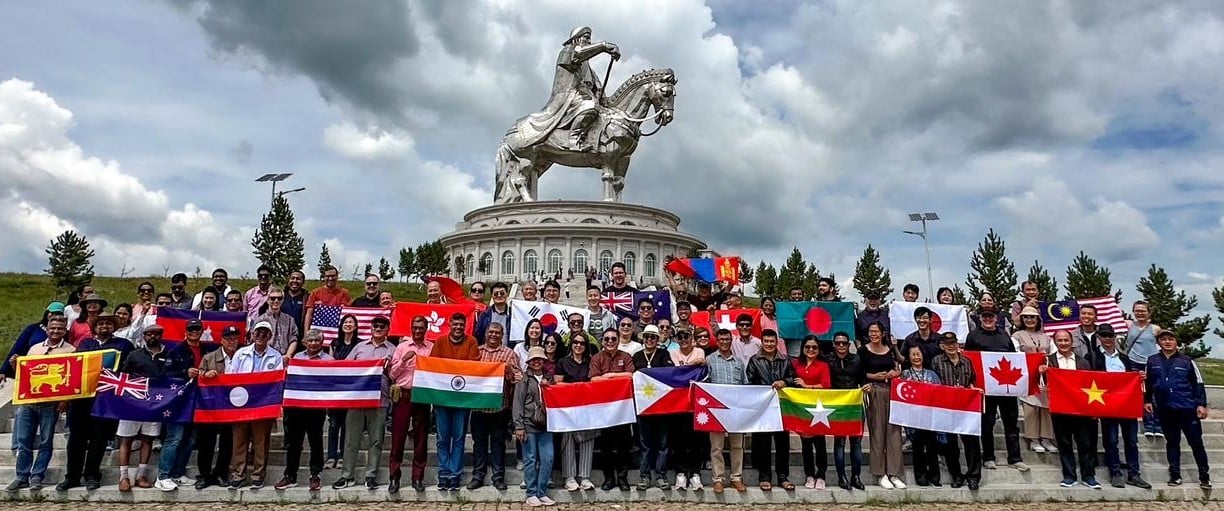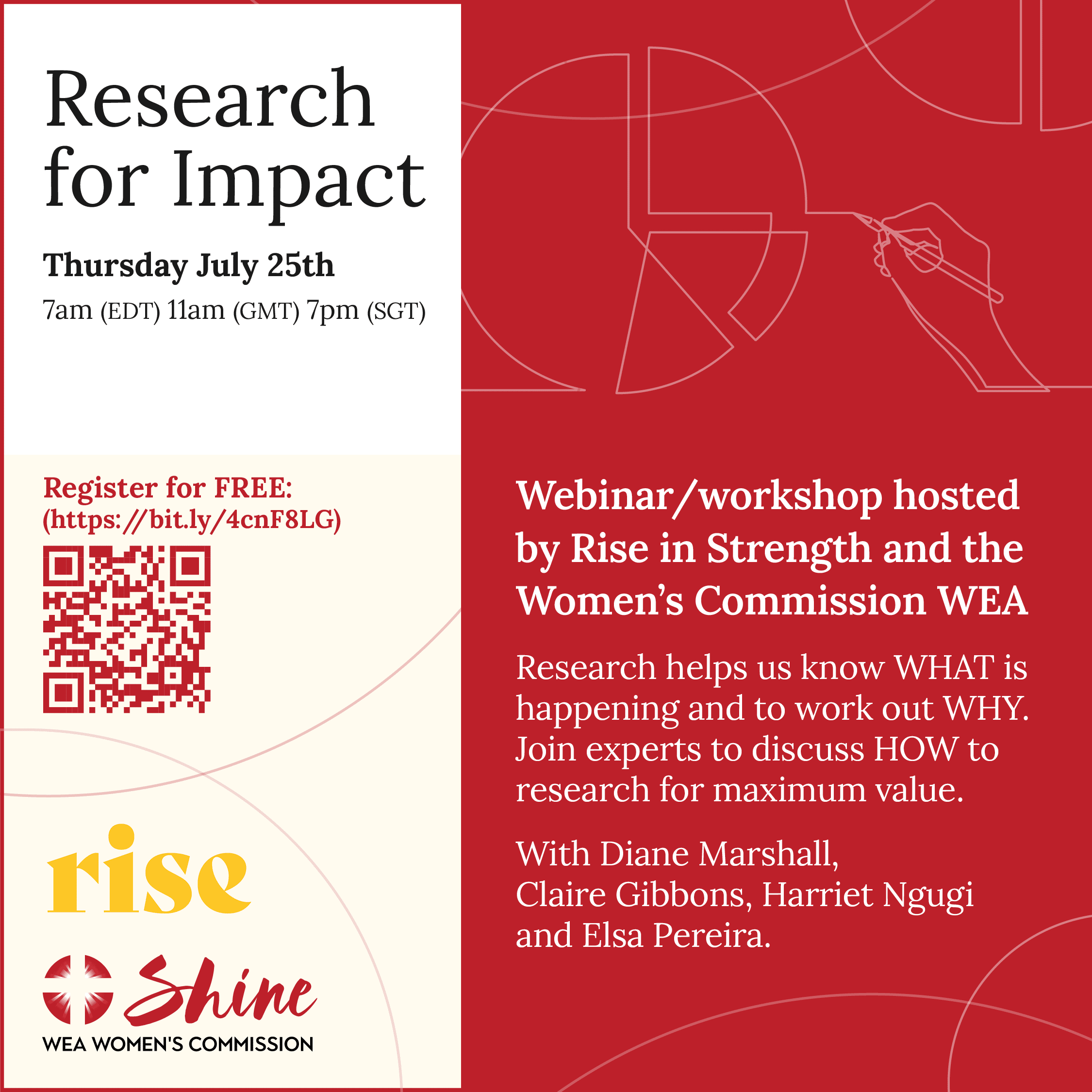By Christian Today
How can men and women in the evangelical Church work together in a way that is effective for the Kingdom and honouring of God and Scripture?
Amanda Jackson, leader of the World Evangelical Alliance’s Women’s Commission, and Dr Peirong Lin, the WEA’s first ever female Deputy Secretary General have written a new resource, Co-Workers and Co-Leaders: Women and Men Partnering for God’s Work, which seeks to answer this question.
They speak to Christian Today about how evangelical men and women can work together as Jesus intended.
CT: How can we engage with the issue of male and female leadership without it becoming immediately divisive?
Amanda:The book is about how we can, at any level, work together more effectively without always having this nervous reaction because we’re working with the opposite sex. Peirong and I wanted this book to get past the usual Bible verses that cause division. We wanted to try and have a different, more holistic look at what mission could be like if men and women work together effectively, recognising that we are different and yet incredibly similar! And that we can actually get on and achieve things for the Kingdom of God. After all, that’s what we all want to do.
CT: What is the message for the WEA family?
Peirong: I think firstly to remove any fears or prejudices when it comes to working with women. We are not strange creatures! We are all here for the Kingdom of God and to serve and be open about it. I think the WEA appointing me to this position sends a very strong signal. The WEA is committed to the leadership of women in the whole Kingdom of God too, it’s not just a male-led movement for men. It’s a movement of broken humans trying together to participate in the Kingdom of God because we love Jesus together.
CT: Which part of Scripture do you think really speaks into this issue?
Amanda: Peirong’s chapter looks at Genesis and how sin affected the relationships between men and women. I think we accept that relationships are broken in some ways but there’s a lot of blame going on, instead of realising that we are redeemed. And of course we’re not perfect so it’s going to take some struggle and forgiveness and laughter along the way, but we ought to recognise that Genesis 3 no longer really takes hold of relationships between men and women.
Having said all that, I think my favourite chapter would be Romans 16. When I was growing up I always thought Paul didn’t really like women and there were all these verses quoted at us about ‘women can’t do this’ and ‘women can’t preach’ and ‘women have to be submissive’.
But Romans 16 shows Paul greeting his friends and coworkers in the church around the world, and it sets out this wonderful picture of men and women doing all sorts of roles. He uses the word ‘co-workers’ a lot, and the word ‘apostle’ to refer to both men and women, so there’s a real sense that everyone is pulling together in churches and in different situations. Some have been thrown into jail, both men and women; others are suffering for the gospel, both men and women.
I think it’s just a great picture of Paul’s real attitude and his understanding of what the Church can look like when women and men are using their different giftings together.
CT: Peirong, the section in the book written by yourself is called “Equal partners”. How do we go about being equal while at the same time balancing our differences and our different giftings?
Peirong: I think what’s important is being equal in value. We can have different roles or gifts but that does not mean that we are less than the other. There is still the need to have mutual respect and love, which makes us equal. We are all sinners and humans, and we all have a God that we look to for our redemption. We don’t look to a man or woman for our redemption.
CT: Amanda, it’s interesting you brought up Romans 16. Do you see a model for us in the early church that we can learn from today?
Amanda: If we want to be quite radical, we could say that the early church wasn’t very hierarchical at all, it was totally based on gifts, and what we’ve created today is a Church with a human structure. Of course, that’s necessary in many ways – we need a structure. But it ends up being quite hierarchical and just copying what the world is like – and that traditionally means men being at the top of the hierarchy.
And something else that’s crept into the Church in the last generation or so is celebrity Christian leaders, which I think is really dangerous. They often lead megachurches, they bring out books, they speak at conferences, and we put them on these big pedestals – they’re almost like little gods. And I don’t think that’s healthy; I don’t think Jesus lived like that. In fact, I think he deliberately shied away from that precisely because it’s dangerous.
What we’ve seen so much of in the last few years, even with hugely respected Christian leaders, is them falling and often that fall has been to do with sex. So one response is to say ‘well, I’m not going to have anything to do with women because that’s dangerous!’ A much healthier vision is to say: let’s work together and have healthy relationships based on respect and understanding and which get us through that issue of only seeing each other in terms of our sex and gender.
So I think the early church is just a wonderful model of people striking out and doing things and getting on with it in the Spirit. We see that in so many churches around the world in central Asia, in the Middle East, in north Africa, places where there is no tradition of church. It’s a bit like the New Testament all over again. There are men and women just chatting to each other about God and forming house churches, and seeing growth, and seeing amazing works of the Holy Spirit.
CT: Amanda, your chapter is titled “More than kindness” and explores Jesus’ encounters with women. What do you think Jesus modelled for us in terms of his encounters with women that we can apply to the Church today?
Amanda: We all know the story of Jesus going to the home of Mary and Martha, but we often ignore the amazing chapter when Lazarus dies and Jesus seemingly deliberately stays away for three days. Martha rushes out to him and they have the most amazing conversation about faith and about who Jesus is, and it’s almost an exact copy of what Peter had said about Jesus a few chapters before. That chapter about Peter is often used to show Peter’s faith and how he understands who Jesus is and yet here’s a woman, Martha, a few chapters later saying exactly the same things and showing the same amazing understanding. Jesus entrusted her with that truth, and Mary as well.
I am struck by the number of times that Jesus has these quite gritty conversations with women. Not just with the Nicodemuses or the tax collectors but with women. And it’s not treating them as a second class citizen or an object of pity. It’s Jesus treating them as women who can grow in faith and understanding, and who indeed are going to be a mighty part of the Church.
Things have changed in recent years so we do now see quite a few sermons at Easter talking about the women. But I think the Church, in treating women gently as mothers and homemakers, misses out on other roles and gifting of women.
Jesus said ‘I don’t have a mother or brothers, you are my mother and brother’. We’re bigger than our role as a mother or wife or father and husband; we are workers in the Kingdom. And that’s very freeing for both men and women. It’s freeing for men because they don’t have this huge burden that they have to do everything and be big and right all the time. When the Church distorts the story, it’s not good news for men either.
CT: Peirong, are there any encounters between Jesus and women that are particularly striking to you?
Peirong: I think the fact that Jesus often hung out with the women alone, like for example with the woman at the well. When I was growing up, the youth group was all about the purity gospel and basically never hanging out with a boy alone. But Jesus never spoke about women as sex objects; he saw them as humans who were worthy of his time and attention, and he was not fearful of them in any way. He was very respectful of all sorts of women and this reminds me that first and foremost, my identity before God is not only as a woman but as a child of God, someone he loves as a human being and not for my gender.
CT: The WEA has not yet had a woman as Secretary General. Do you think the WEA is ready for that yet?
Peirong: I think it goes back to what Amanda said at the time of the General Assembly in 2019, that women need to know they are on a long journey when it comes to being evangelicals in the church. I think that continues to be the case because the WEA represents a large constituency of Christians. This however should not be too discouraging since our service is unto God and not unto men.]]>





Stay Connected